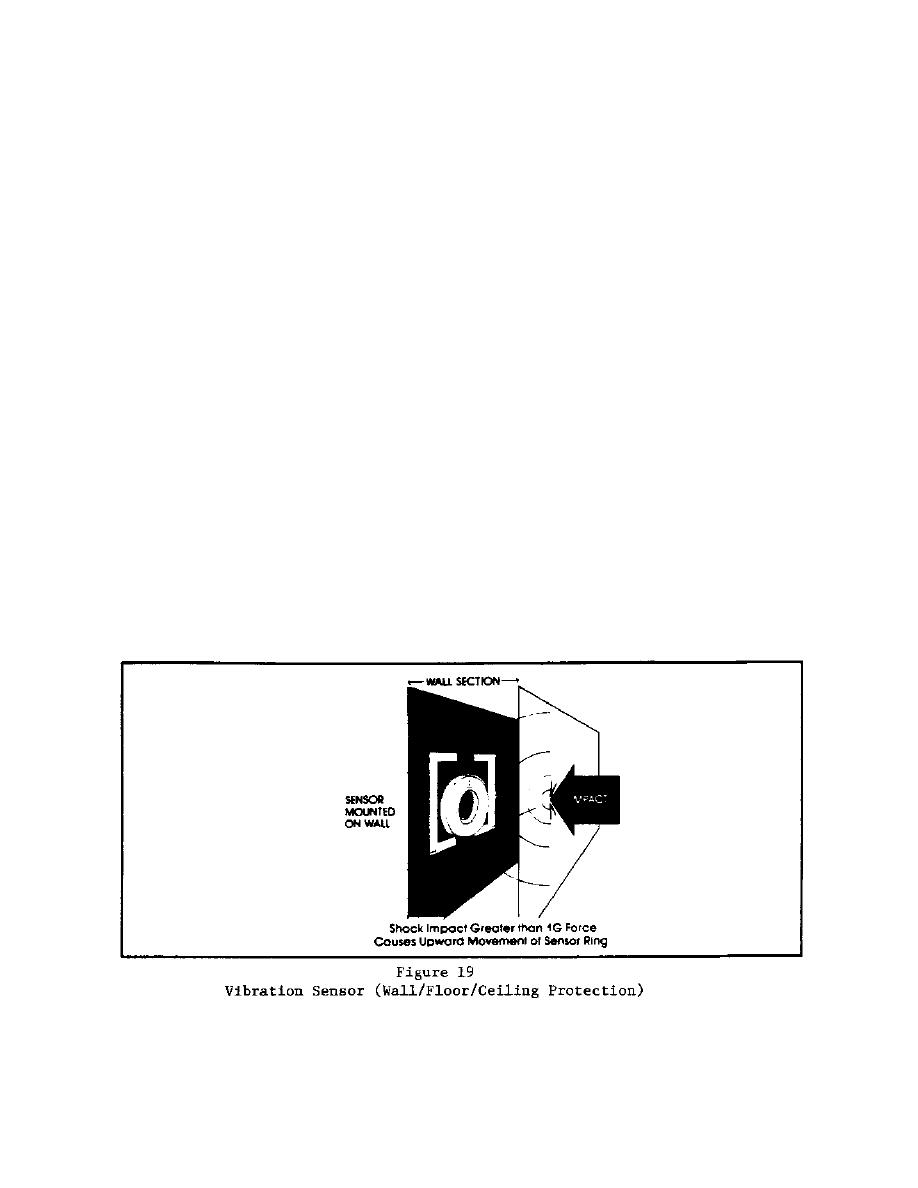

Custom Search
|
|

|
||
 from sources of vibration which are not attempts at penetration (e.g.,
exterior vehicular traffic).
c) Rigid wall materials such as masonry or reinforced concrete
make excellent surfaces for application of this sensor.
d) The sensor should always be specified for installation on the
inside of the wall surface (within the protected area).
4.1.3.2 Grid Wire Sensors. Grid wire sensors are a form of breakwire
sensors discussed in paragraph titled "Breakwire." In this case, the wires
are arranged similar to a screen, discussed in paragraph titled "Screening
and Detection," but with a larger mesh, normally not more than 4 to 6 inches
square. The "grid" is imbedded in or affixed to the building perimeter
barriers being protected. When the barrier is penetrated, the wire (and
electric circuit) is broken, causing an alarm. The same considerations for
application and installation which apply to breakwire and screen sensors
apply to grid wire sensors. Other considerations are:
a) Figure 20 depicts a grid wire sensor application. Note that
the connection to the door is flexible to allow opening and closing without
causing strain on the connection cable.
b) When specifying installation, the wire grid should be, if not
imbedded, covered with wallpaper or similar material to conceal the grid and
protect it from accidental breakage.
c) Whenever broken, either accidentally or by an intruder, the
grid must be repaired to restore protection.
13.02-41
|
 |
|
 |
||